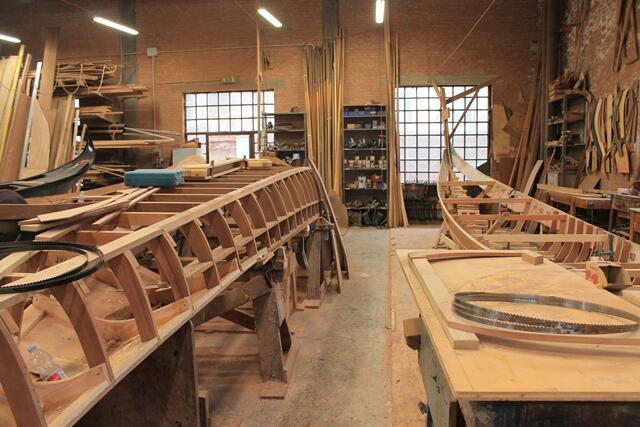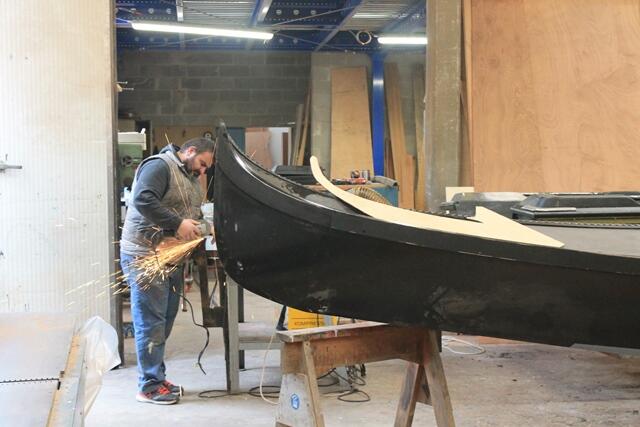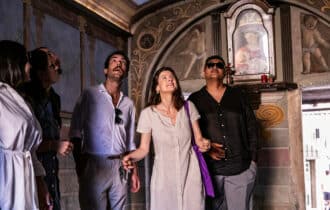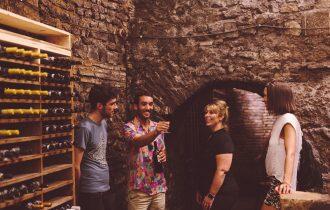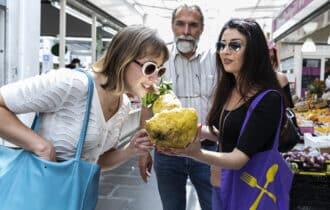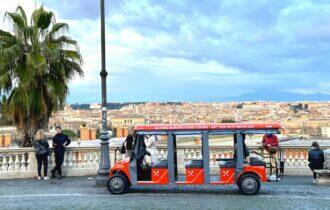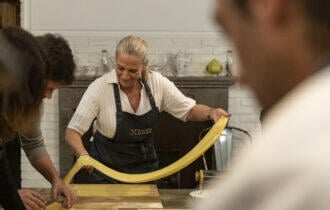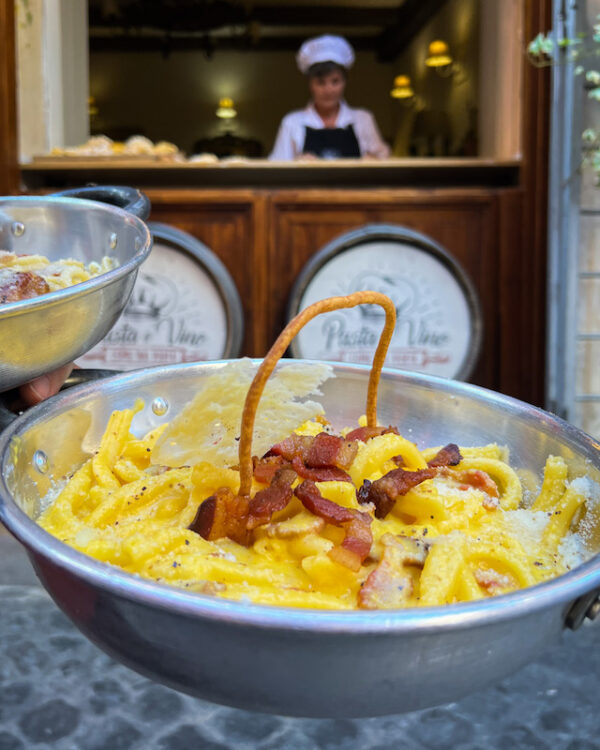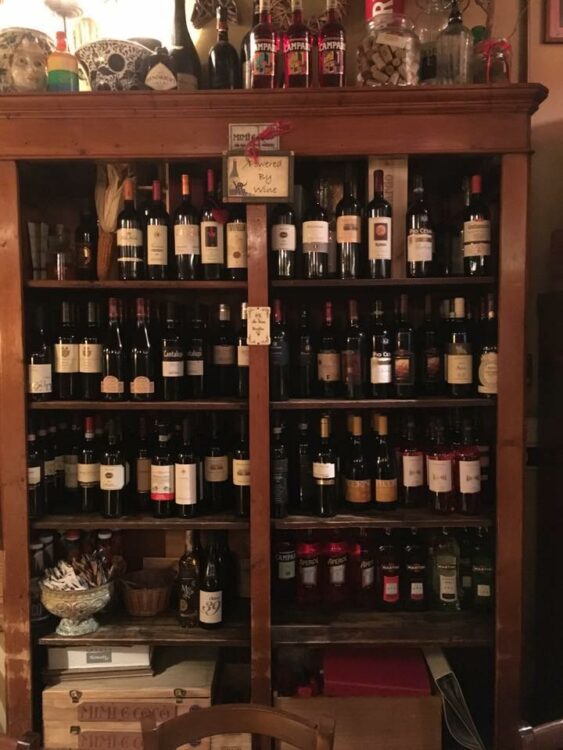Is it really a must to go for a gondola ride in Venice? It is on many people’s bucket list, and if it’s on yours, here are some tips and information to enjoy the ride. In other words: Your Gondola Guide to Venice!
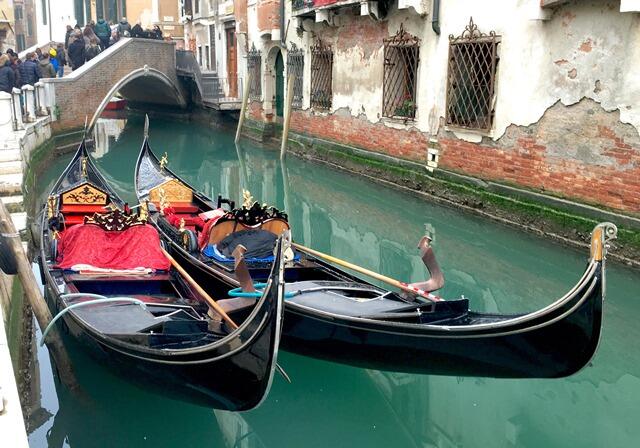
What is a gondola?
A gondola [pronounced GONE-duh-la] is a typical Venetian boat. It has a flat bottom and an elongated banana shape; it’s always black and it’s steered by one person, the gondoliere, on one side of the boat.
How is it made?
It’s made in one of the 3 squeri in Venice, using the ancient techniques and precise indications. They are made of 280 distinct pieces and 8 types of wood – oak, elm, lime, larch, fir, cherry, walnut, and mahogany. The oar is made of beech and the forcole (the special oarlock) is in walnut. Here is a photo of the squero in San Trovaso, in the center of Venice, and the work in progress at Crea, a squero that we visited on Giudecca. They produce about a dozen gondole per year.
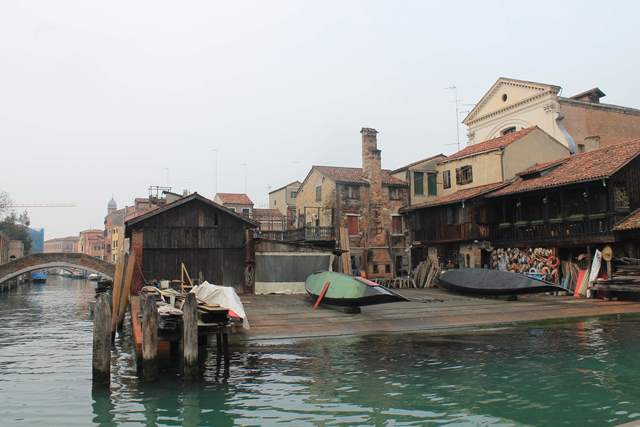
How can I ride a gondola in Venice?
It’s easy to find gondola rides in Venice while walking around. The most popular area is the shore right in front of St. Mark’s Square. This area has a gondola station, or you can wander the streets and minor canals to find a quieter area to start your trip.
How much does it cost to ride one?
The flat rate is €80 for half an hour during the daytime. After 7 pm, it’s €100, but the atmosphere is very magical.
A gondola on the cheap – does that exist?
If that’s a bit too steep for your budget, you can take a couple minutes’ ride on one of the traghetti, which are public gondolas used to cross the Grand Canal in parts of town where there are no bridges. That will set you back just €2. Oh, and no sitting down on this one – you have to balance yourself well!
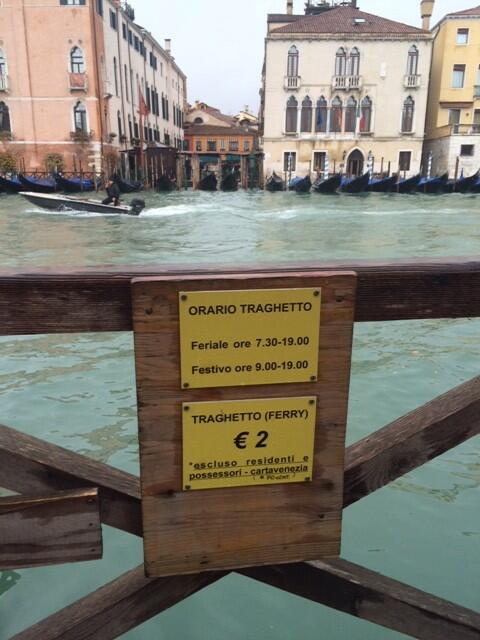
Why are gondolas painted black?
There are two legends as to the origin of the black gondola, and one story that is considered true by historians. What we know for sure is that the boats used to be all multicolored and extremely flashy.
Story #1: When the Black Plague decimated the population of Venice in 1630, the Doge (ruler of the Republic of Venice) issued a decree to make all gondolas black to commemorate the thousands of deaths.
Story #2: Each Venetian family had its own gondola color, and some families were better known than others. Back in the day, clandestine affairs took place in gondolas, but it became more and more difficult to hide it because everyone saw where the boats were going… so, the gondolas were painted black to maintain anonymity.
Story #3: The noblemen and high bourgeoisie transformed the gondola from a simple means of transportation to a symbol of their wealth. They started adding more and more embellishments and luxurious fabrics, so much so that it became a competition. The situation was getting out of hand and it was decided that the flashiest gondolas had to pay a fine… but the people actually preferred to pay the fees rather than toning down their swag. So, in the end, between the 1500s and the 1600s, the Provveditore (overseer) decided that all gondolas had to be painted black.
Try and guess which story you think is true! (The answer is at the end of the article)
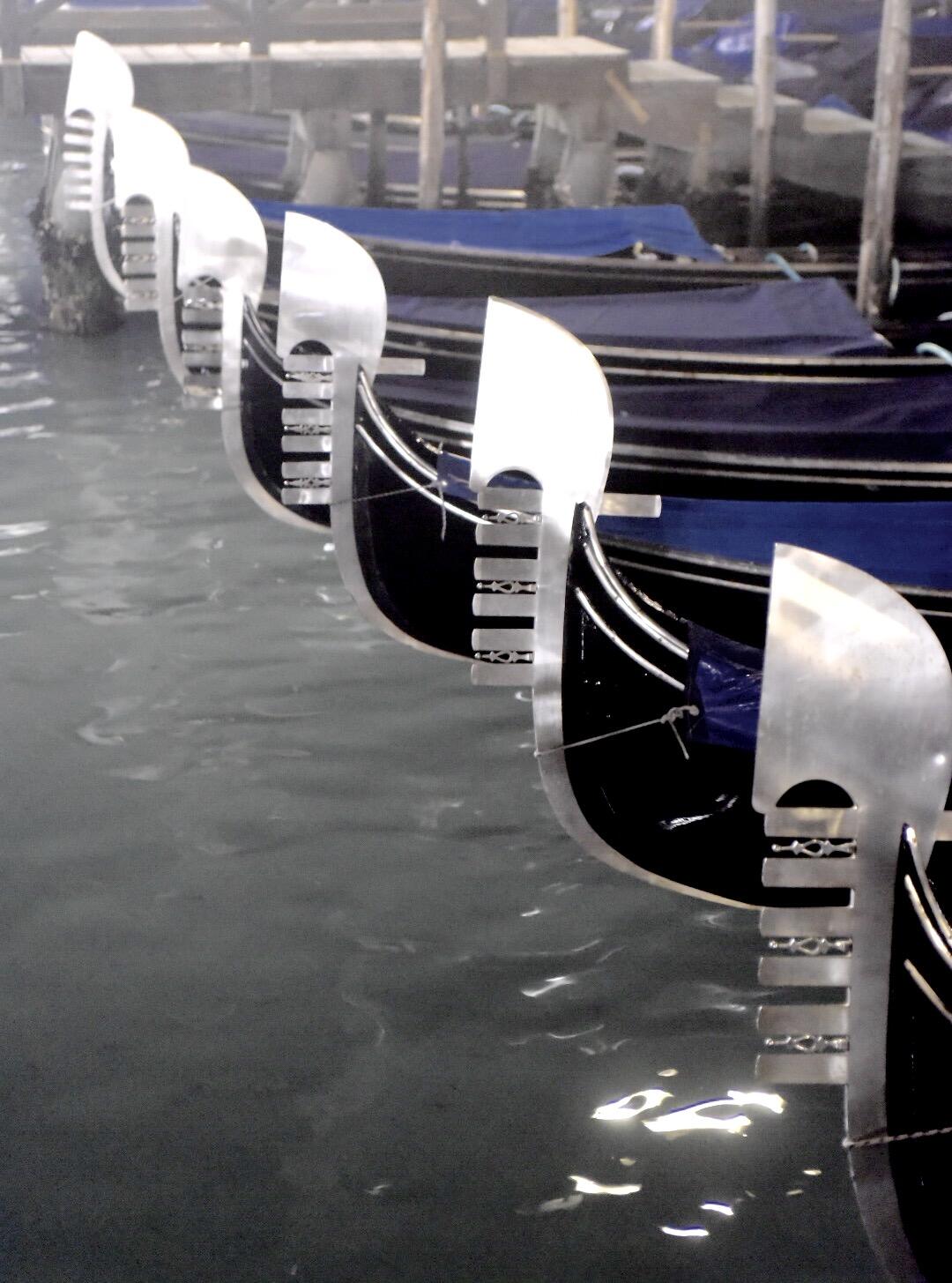
What is that metal F-shaped decoration on the front of the gondola?
This is called the ferro and the 6 prongs represent the 6 sestiere, or districts in Venice. The prong facing the back represents Giudecca, the island where the famous hotel Cipriani is located. The half-moon shape represents the Rialto bridge; the s-shape stands for the shape of the Grand Canal; and the rounded top resembles the hat of the Doge (ruler).
How can the boat be steered by paddling on only one side?
The gondola is built higher and more curved on the left side, making it tend to turn right and allowing the gondolier to maneuver it by rowing just on the right side. The paddling is actually a complex sculling motion, using different positions in the forcola, the oar rest, to push or pull.
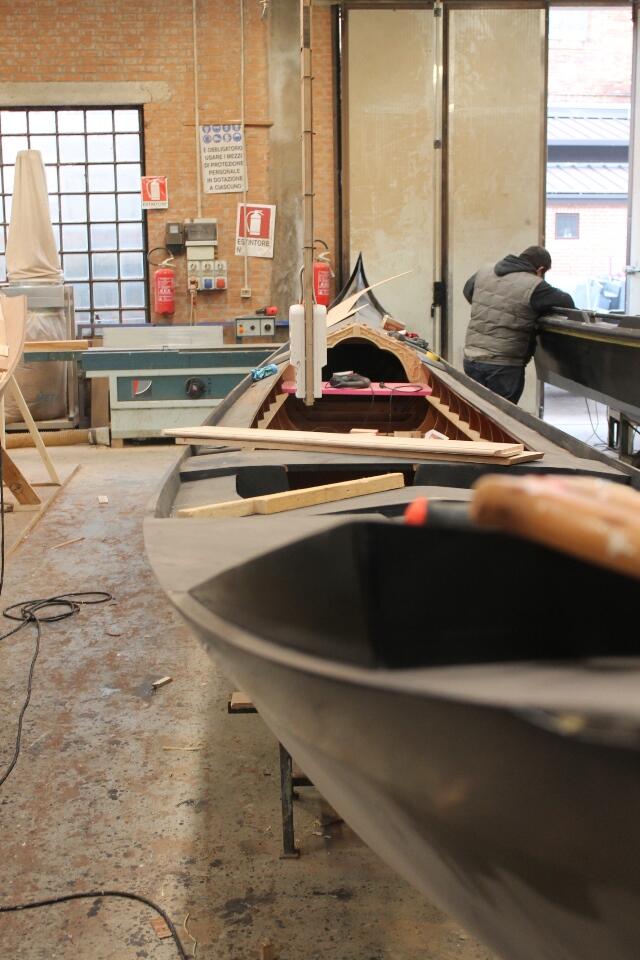
Can I drive it?
No, but you if you want to learn to row yourself, you can check out www.rowvenice.org, a non- profit organization that gives rowing lessons not on a gondola but on a batella: a small open boat propelled with just one oar like a gondola. A majority of women, both Italian and expats, operate the organization and all share a passion for voga, or rowing.
How many gondolas are in Venice?
There are about 400 gondolas in service, and gondoliers need about 400 hours of training before they are licensed. There is just one licensed female gondolier in Venice.
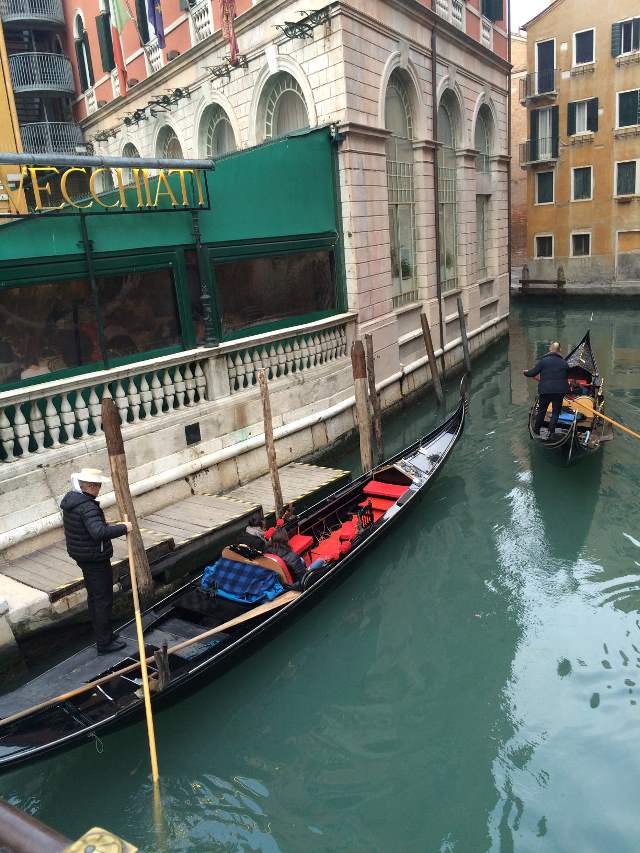
What is my gondoliere yelling?
As a gondoliere comes to a bend in the canal or a corner he must yell OY to call attention to himself. Then he must yell to signal the direction he is taking, shouting Premando if he is turning left and Stagando if turning right.
And finally, here are 10 Dos and Don’ts for Your Gondola Ride:
- DO take pictures, and your gondoliere will take a picture of you (when you’re stopped, of course).
- DON’T bother booking ahead. It’s easy to find a gondola, and you can pick one you like.
- DO choose your gondoliere. Talk to him and see if you like him. If you don’t, there are many others to choose from.
- DO make sure you agree on the price before you get on. The timing is very precise and extra time will cost you!
- DON’T eat or drink on the gondola. The upkeep is really expensive and if you show the proper respect, you will be rewarded as a star tourist.
- DON’T smoke and, most of all, don’t crush out your cigarette on the boat. (Yes, it really happened.)
- DON’T move around on the gondola. They are quite tippy and it’s easy to lose your balance.
- DON’T ask the gondoliere to sing or play music. There are special gondolas with music (and they cost extra, of course).
- DON’T ask personal questions like “How much do you earn?” or “Do you pay taxes?”
- DO team up with other tourists. You can ride a gondola in groups of up to 6 people, so if you want to snag a cheaper ride, ask the people around you if they’d like to share!

Your gondolier is also trained on the history of Venice, so feel free to ask questions, but be careful about asking stupid questions. And what questions are considered stupid? We asked the local gondolieri and here are some doozies:
- Did they build Venice and then opened a faucet to flood everything?
- What is the Rialto Bridge for?
- How do I get to St. Mark’s Square by car?
- Can you take me to see the Medici house? (uh, they are from Florence)
- Can you take me to see where Romeo and Juliet lived? (oops, they are fictional characters from Verona)
- Do the buildings float?
- Can we make love on your boat?
- Do you want to take me out after the ride? (yes, the gondoliers get propositioned all the time)
- Did the winged lions really exist? One creative gondoliere told a story of the winged lions roaming free in Venice long ago which the Venetians used in battle… and the tourists believed every word.
So, yes, the gondola ride is a touristy thing to do, but we saw many happy people walking away after their ride, a once-in-a lifetime experience in the most magical city in the world. Go for it!
Oh, and here is the answer to the gondola story: the one deemed most truthful by historians is Story #3. The only adornments on gondolas allowed today are the ferro in the front, a pair of seahorses on the sides, and the curly lama on the tail.

